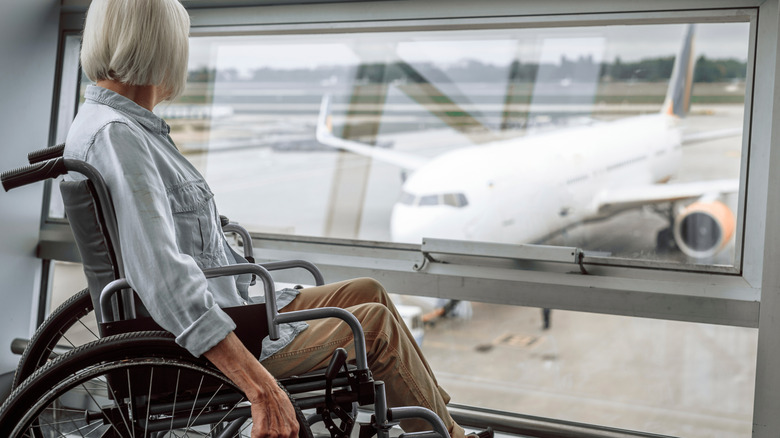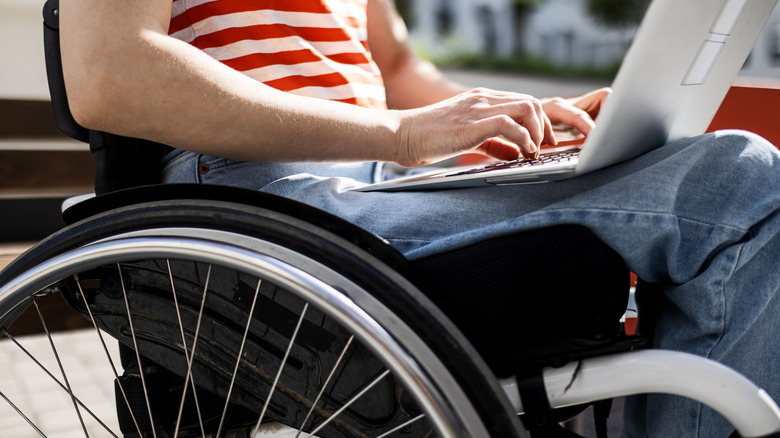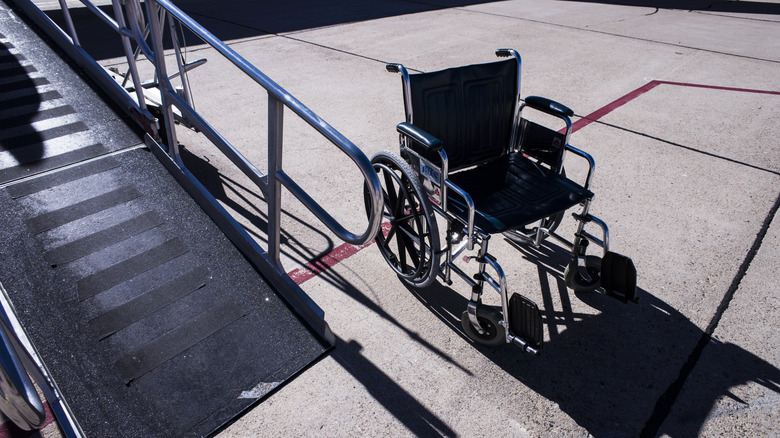What To Do If Your Mobility Device Gets Damaged While Traveling
For travelers with mobility needs, flying can come with its own unique set of challenges and obstacles — some of which can ultimately dampen even the most exciting adventure. While your level of mobility is one of the first things flight attendants notice about you when you board a plane — in order to assist and accommodate your needs, so there's no need to stress about in-flight support — one of the biggest concerns is the possibility of arriving at your destination only to discover that your mobility device has been cracked, snapped, or mangled during the trip.
Per the U.S. Department of Transportation, in 2023, local airlines reported that 1.38% of all wheelchairs and mobility devices transported suffered some sort of damage — a costly mistake that affected nearly 12,000 travelers across the country. And while the percentage might seem small, it's no consolation for users who depend on these devices to live a full and comfortable life.
The prospect of a damaged mobility device might seem like reason enough to prevent people from traveling altogether, right? Thankfully, it's not all doom and gloom. After all, if a U.S. airline damages your wheelchair or mobility equipment, you won't just be left stranded. In fact, they'd be required to cover 100% of all repair or repurchase costs — as well as provide a suitable replacement for as long as it takes.
Filing a claim and receiving compensation
Dealing with damaged mobility equipment can feel incredibly overwhelming — especially in a foreign country or unfamiliar city. Luckily, knowing your rights and following the correct procedures can actively help you resolve the situation before it escalates — and get you back on track for enjoying your travels.
First, from the moment you find your mobility device might have been damaged, make sure you document everything with detailed photos and videos. Along with this, and before you leave the airport, ask to speak with the airline's Complaint Resolution Official (CRO) — a specialist trained in handling accessibility issues — and let them know exactly what happened.
From there, you can submit a formal complaint through the airline's official website that details what happened and, this is important, directly asks for compensation. This must be done within 45 days of the incident. As a pro tip, make sure to reference the Air Carrier Access Act (ACAA) — which makes the airline entirely liable for covering all of the expenses — and state a specific monetary sum of what they owe you. Additionally, you'll want to file a second report with the Department of Transportation's Aviation Consumer Protection Division within 180 days of the incident. This should cover all the bases, and hopefully secure everything you need to get your mobility device back in working order.
Getting ready to travel with a mobility device
While you can't completely eliminate the risk of damage, there are certain steps you can take to better handle whatever curveball travel throws your way. Plus, as a bonus, there's always the possibility that looking into these added precautions can help you unlock accessible travel opportunities that you might have hesitated to pursue before. For starters, before heading to the airport, make some time to get very familiar with your device — from looking into tech specs to memorizing the location and function of every important switch and lever. This will be essential if you ever need to repair something abroad, where language barriers and access to specific parts might get in the way.
Speaking of repairs, make sure to also pack a DIY fix-it kit in your carry-on luggage. Depending on your device, this can include everything from spare inner tubes to extra nuts, bolts, zip ties, and duct tape. That way, if finding a specific piece of equipment isn't possible at your destination, you can do your best to MacGyver a quick fix until a more permanent solution becomes available.
Last, but definitely not least, always notify your airline about your mobility needs with enough time and detail. Certain aircrafts have limited cargo space and can't always accommodate certain types of devices, which means that planning in advance is essential. That way, by notifying them well ahead of your trip, you can at least plan for a backup if, for some reason, the airline informs you that your device won't fit.


